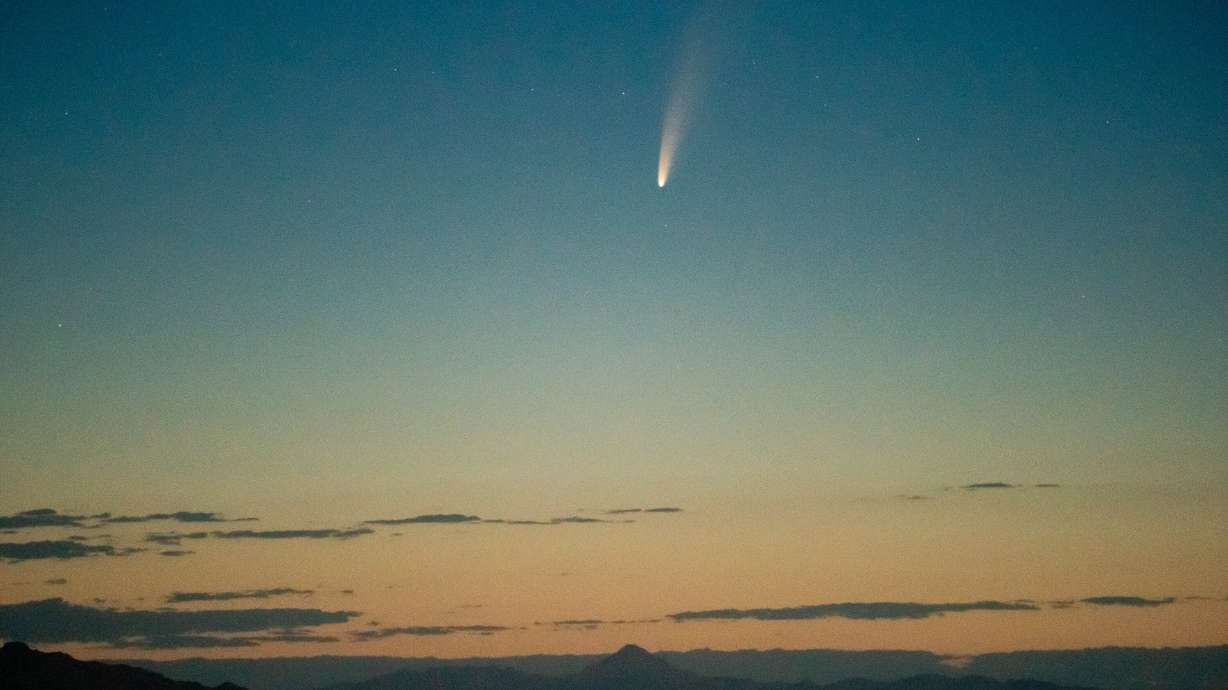Estimated read time: 4-5 minutes
- Utah boasts the highest concentration of certified International Dark Sky parks globally.
- Astrotourism in Utah enhances tourism, with visitors spending more and staying longer.
- Dark skies support local economies, generating $6 billion and creating 113,000 jobs in a decade.
SALT LAKE CITY — NASA astronauts Suni Williams and Butch Wilmore spent 286 days among the billions of stars that make up the universe.
But you don't have to leave the planet to immerse yourself in the cosmos. Rather than an astronaut, you can be an astrotourist.
Utah has some of the darkest skies on Earth and the highest concentration of certified International Dark Sky parks and communities in the world. For the fifth consecutive year, Gov. Spencer Cox declared April as "Dark Sky Month" in Utah, touting the tourism benefits stargazing brings to the state and its Western neighbors.
"Visitors to Utah engaging in astrotourism tend to stay longer, spend more and mitigate harmful tourism impacts on the local community," according to an official declaration Cox signed.
A Space.com article says it is impossible to talk about astrotourism without mentioning Utah.
"The landscape is so varied — there are beautiful tall snowy mountains, winding red rock canyons, arches and everything in between," Bettymaya Foott, an astrophotographer and director of engagement at the International Dark Sky Association, told the publication.
"The juxtaposition of a beautiful starry sky against a breathtaking landscape makes it pretty hard to take a bad photo."
What is astrotourism?
Astrotourism is traveling to places — sometimes remote locales — where it's possible to see celestial events such as stars, planets, eclipses and meteor showers due to minimal light pollution. It also includes visiting observatories, planetariums and other astronomy-related places.
"Preserving the night sky is vital to Utah's long-lasting tourism economy and a dynamic visitor experience," Natalie Randall, managing director of the Utah Office of Tourism and Film, said in a press release. "Utah State Parks, national parks and local communities have shown tremendous leadership in prioritizing night sky preservation and offering unique year-round programs for both residents and visitors."
Astrotourism is anticipated to generate nearly $6 billion and support over 113,000 new jobs in the Colorado Plateau over the next decade, according to the Utah tourism office.
The Colorado Plateau, a region that includes parts of Arizona, Colorado, New Mexico and Utah, is known for its dark, star-filled night skies.
Seeing stars
A 2019 study found tourists in national parks are increasingly interested in observing the night sky, especially considering that natural recreational amenity is quickly disappearing from the planet. The study forecasts that tourists who value dark skies will spend $5.8 billion over the next 10 years in the Colorado Plateau and create more than 10,000 new jobs in the area each year.
"Furthermore, as dark skies are an even more intense natural amenity in the non-summer months, they have the ability to increase visitor counts to national parks year-round and lead to a more efficient use of local community and tourism-related resources throughout the year," the study says.
All five of Utah's national parks — Arches, Bryce Canyon, Canyonlands, Capitol Reef and Zion — as well as 10 state parks and three communities are accredited International Dark Sky places.
"While Utah's stunning state parks draw visitors from across the globe during the daytime hours, you don't want to miss out on the magic that begins after sunset," Utah State Parks director Scott Strong said in a press release. "Dark sky programs offer visitors a unique perspective. Experiencing state parks like Goblin Valley, Kodachrome Basin and Dead Horse Point under the starry sky is an experience that you're sure to remember forever."
What is a Dark Sky place?
The International Dark Sky Places program certifies communities, parks and protected areas around the world that preserve and protect dark sites through responsible lighting policies and public education, according to DarkSky.org.
DarkSky has certified more than 200 places since Flagstaff, Arizona, was named the first International Dark Sky City in 2001. There are nearly 62,000 square miles of protected land and night skies in 22 countries on six continents. Certified areas are required to use quality outdoor lighting, effective policies to reduce light pollution and ongoing stewardship practices.
Natural Bridges National Monument in southern Utah was the first dark sky designated park in the world.
According to DarkSky, certification alerts visitors to light pollution and the need to preserve the night sky as a natural resource. It supports management agencies in achieving long-term conservation targets and connecting people to nature. It also serves as an economic driver by fostering increased tourism and local economic activity.
The Utah declaration says stargazing, astronomy programs, star parties, dark sky photography and other activities allow Utahns and visitors to enjoy the physical and emotional benefits of the night sky. Dark skies are also integral to the well-being of many animal and plant species, and are shown to have positive health impacts on people.










